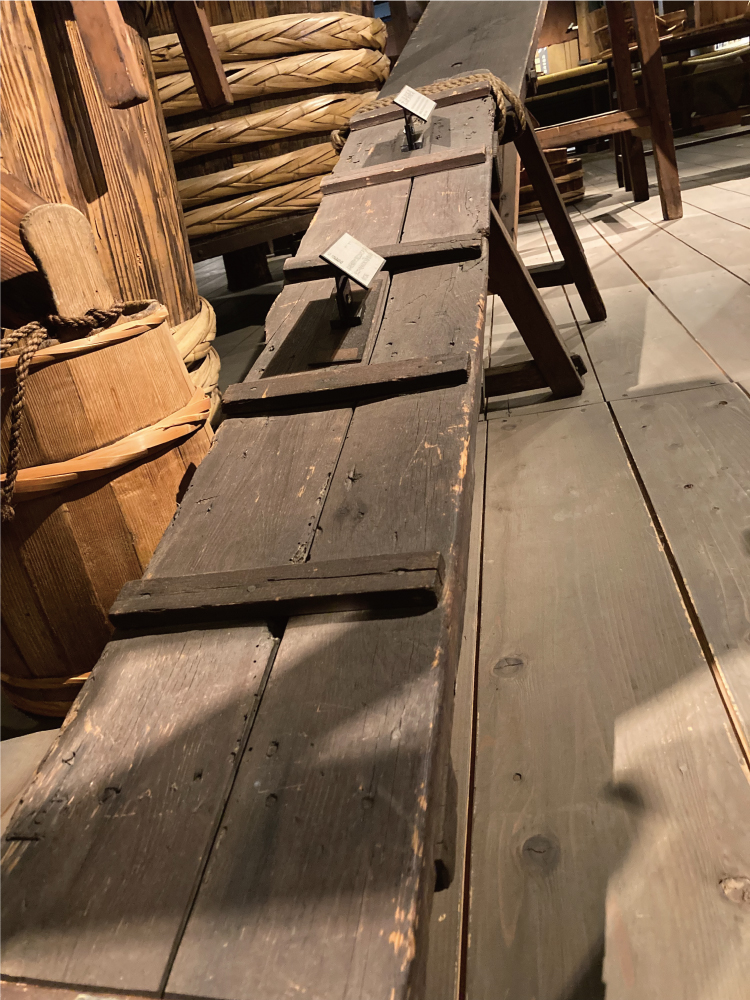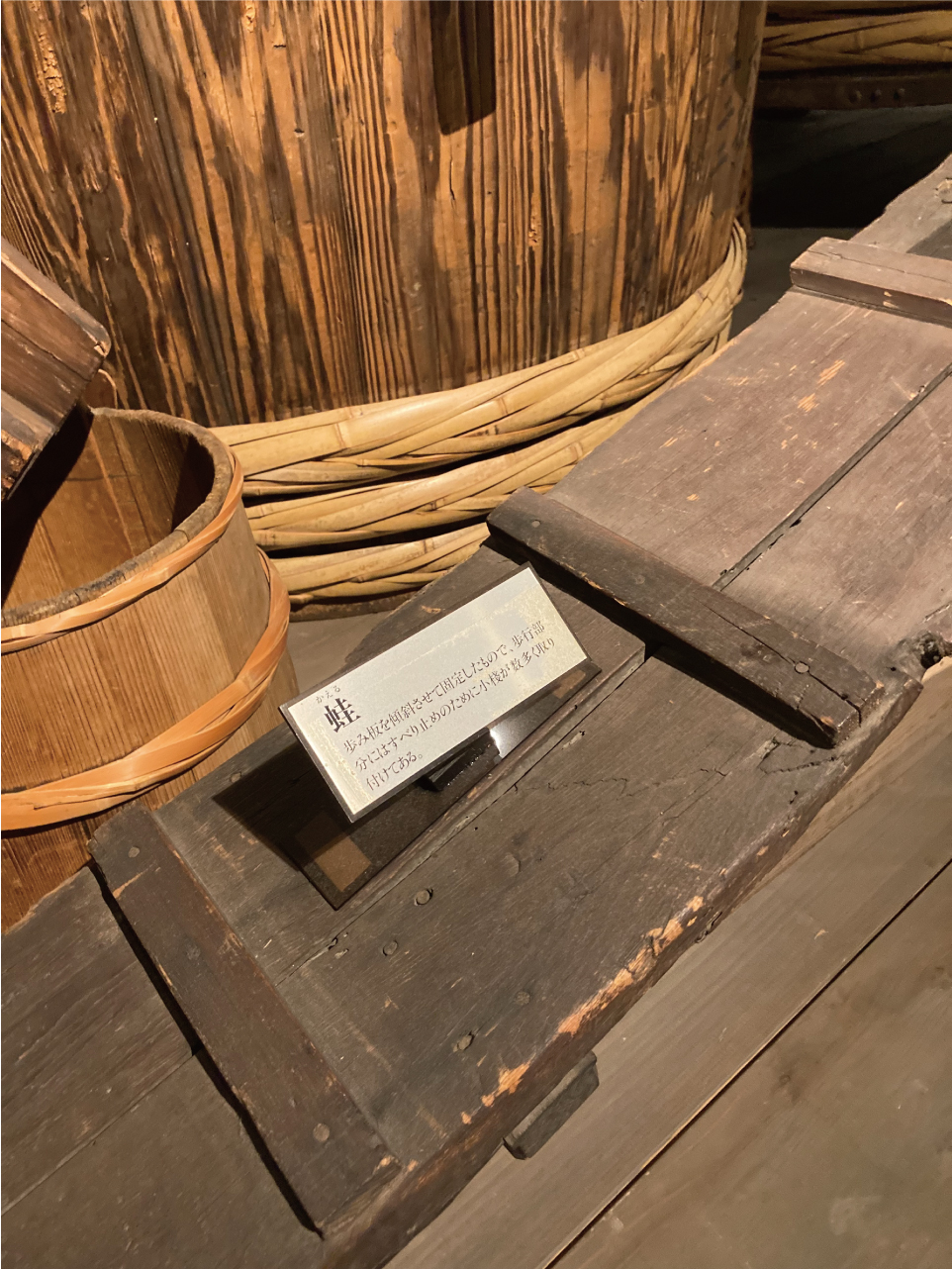Moromi (main mash)
The moromi is made by adding the steamed rice, koji and water to the moto (yeast starter).
This process is called shikomi.
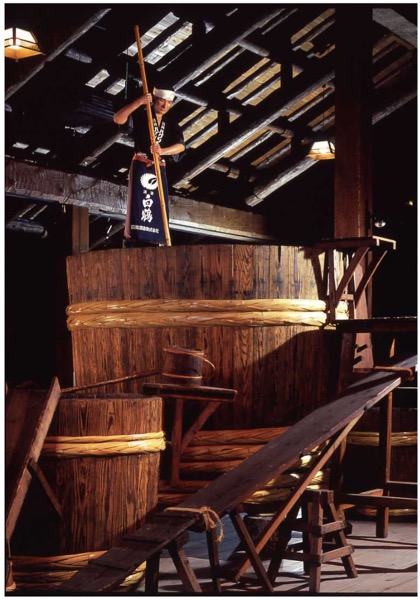
The ingredients are added in three stages and the volume of the mash is doubled on each occasion.
Inside the tub, the starch in the rice is converted into sugars by the koji, and the sugar is converted to alcohol by the yeast. It is the most unique characteristic of sake brewing that these two reactions happen simultaneously.
Tools on Display
O-oke (Large Tub, Approx. 33 koku) (Approx. 3,300 1.8-liter bottles)
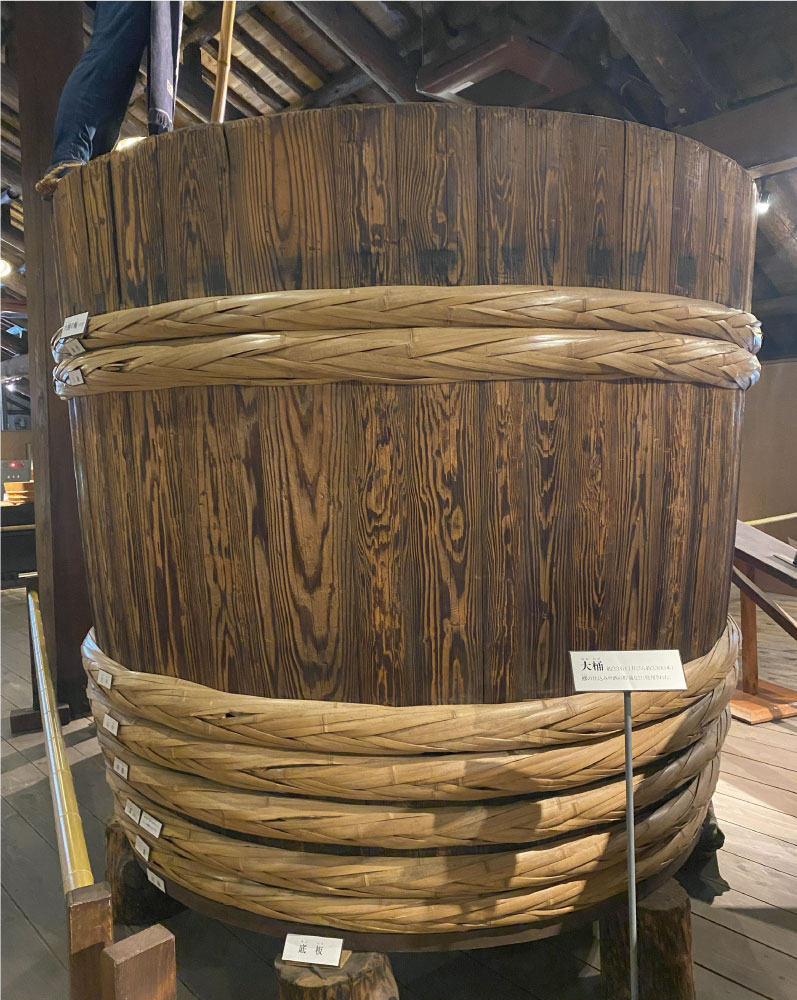
Used for preparing the moromi and storing sake.
O-kai (Large Paddle) Approx 2.3 m
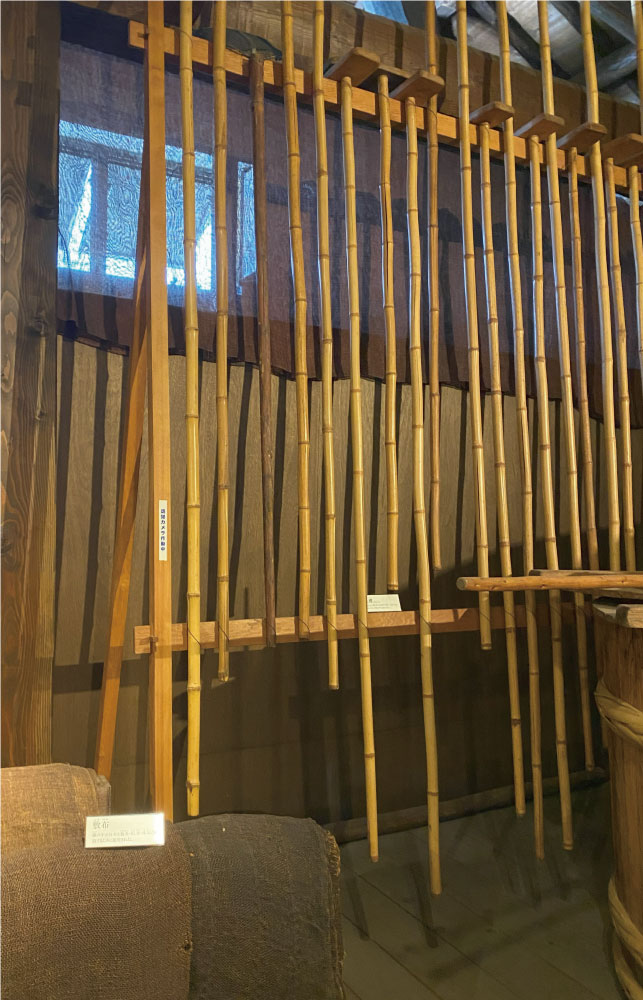
This paddle was used to stir the moromi and sake in large vats, and is still used today. It is the largest of the paddles used.
Udon-ya
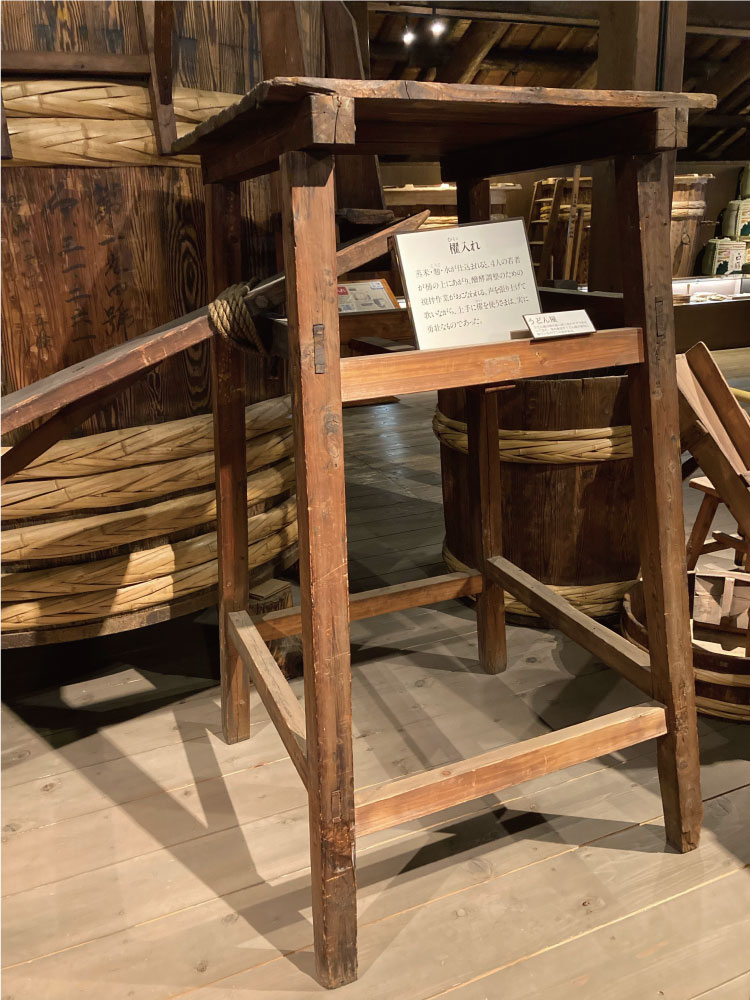
The udon-ya has a tall, four-legged turret-like shape, and resembles an old nighttime udon stall, hence the name.
Kaeru (Frog)
A walking board tilted and fixed in place, with many small ledges attached to the walking part in order to prevent slipping.
Walking Board/Uma (Horse)

The udon-ya, walking board, and uma were used together. They were placed next to the o-oke and worked atop of. The udon-ya was so named for its resemblance to a nighttime udon stall. When viewed from the side, the uma's shape, an isosceles triangle with four legs, resembled a horse, hence its name.
Tonbo-shaku (Dragonfly Measure)
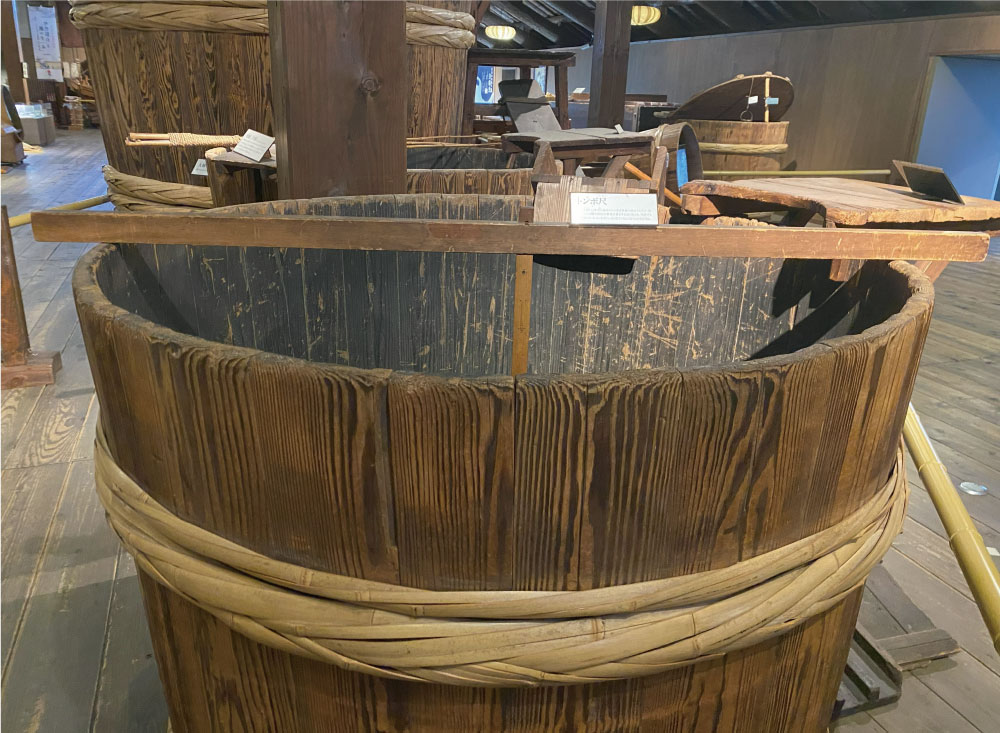
A ruler that measures the vertical distance from the top of the vat (the upper edge) to the surface of the liquid. It was used to calculate the quantity of moromi or sake in a vat, and is still used for moromi today. Its name comes from its shape resembling that of a dragonfly.
Chabo-chabo

A vertical bar fixed to the center of a board, about 30 cm square, which fits comfortably inside a masugata.
Kankan-bo
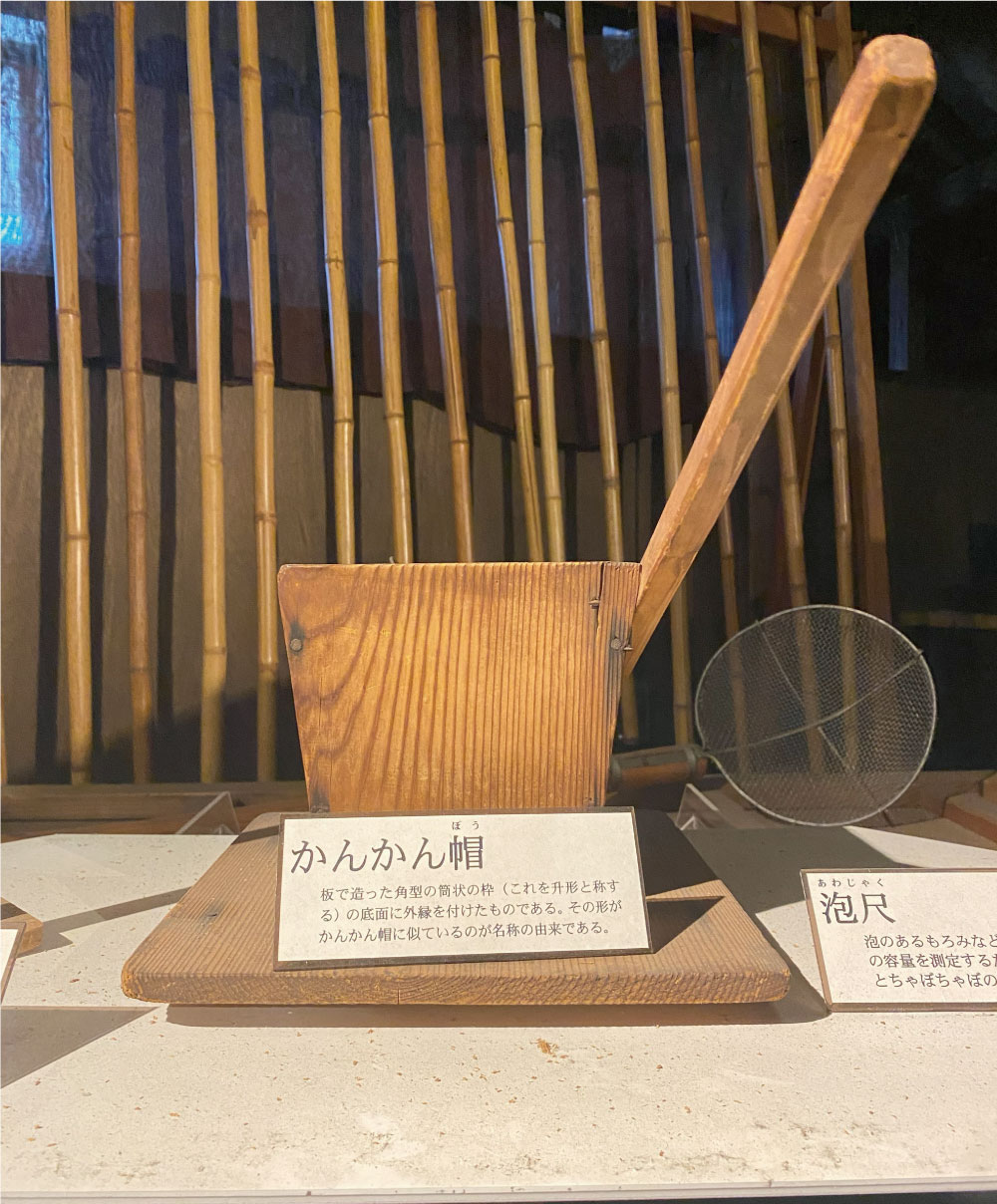
An outer edge attached to the bottom of a square frame (this is called masugata) made with boards. Its name comes from its shape, which resembles a hat of the same name.
Awa-shaku (Bubble Measure)
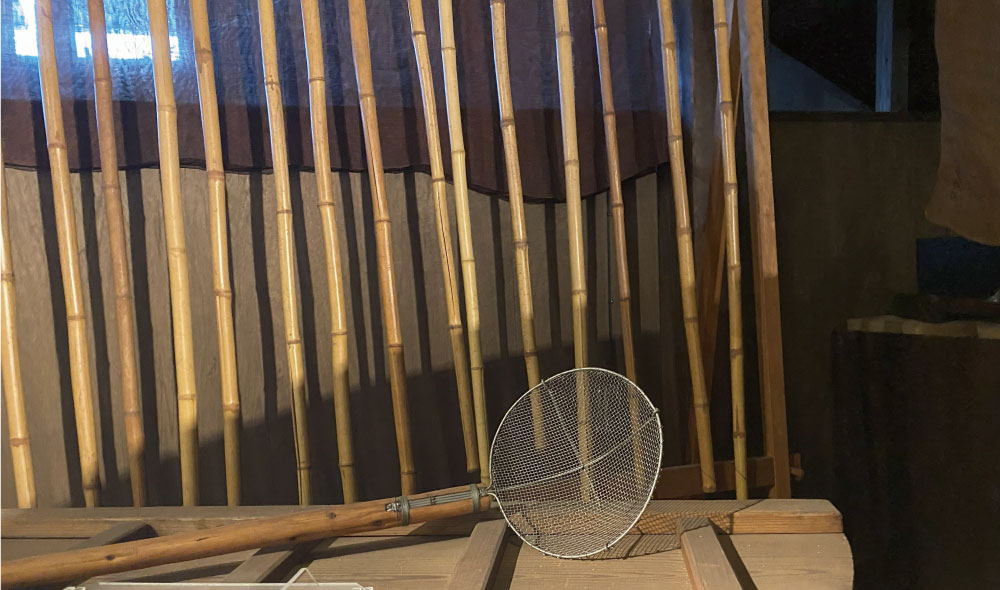
A tool for measuring the actual volume without bubbles, such as that of moromi which bubbles. It consists of two parts: the kankan-bo and chabo-chabo.

